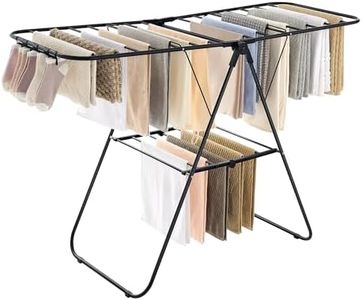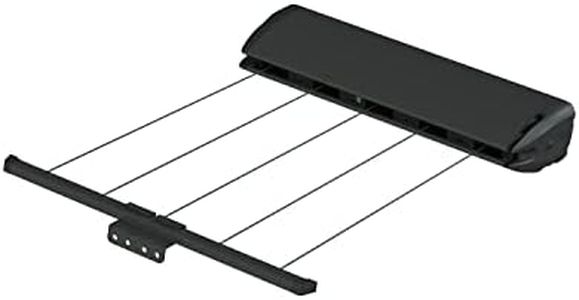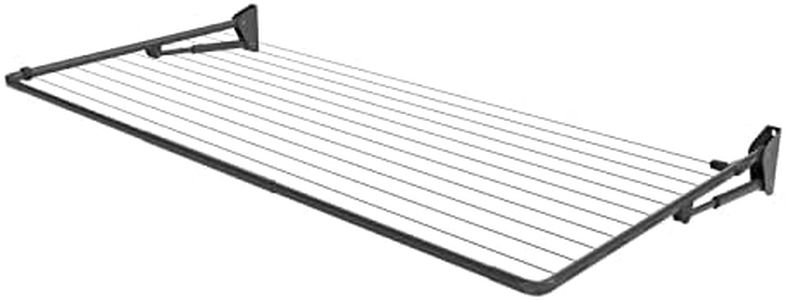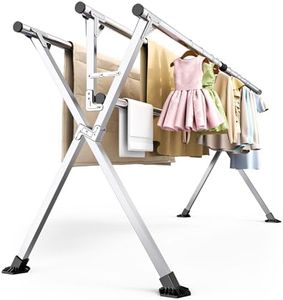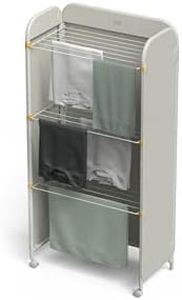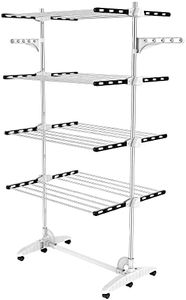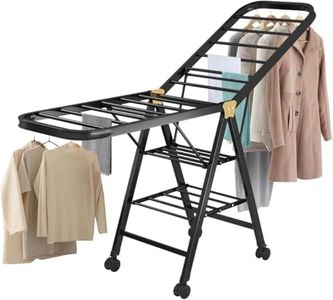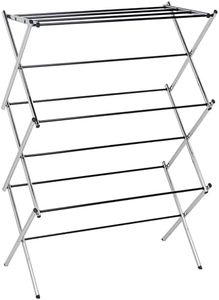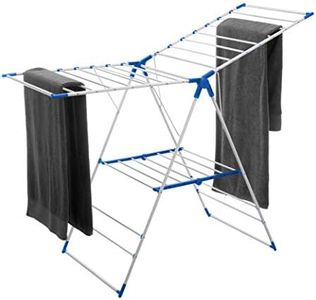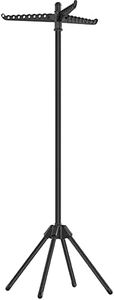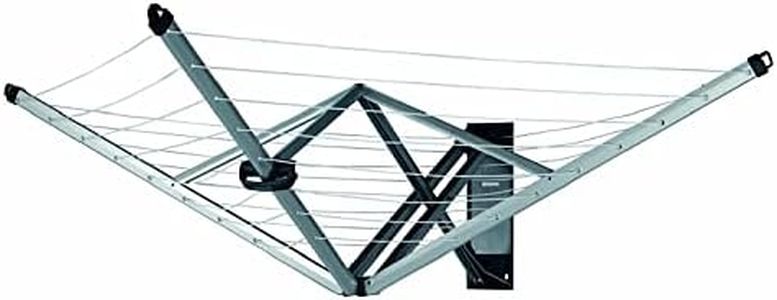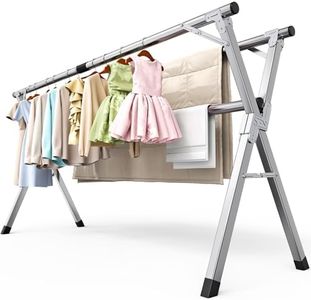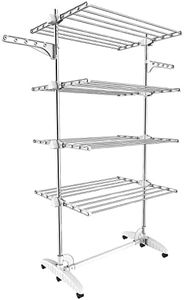We Use CookiesWe use cookies to enhance the security, performance,
functionality and for analytical and promotional activities. By continuing to browse this site you
are agreeing to our privacy policy
10 Best Clothes Airers
From leading brands and best sellers available on the web.Buying Guide for the Best Clothes Airers
Choosing the right clothes airer can make a big difference in how efficiently you dry your laundry indoors or outdoors. The ideal airer for you depends on your living space, the amount of laundry you typically wash, and where you plan to use it. A well-chosen clothes airer can help save energy, protect your clothes from wear and tear caused by machines, and fit seamlessly into your lifestyle.Drying Space (Length or Surface Area)Drying space refers to the total area available for hanging clothes on the airer, usually measured in meters or feet. This is important because it dictates how much laundry you can dry at once. Smaller airers with less than 10 meters are good for individuals or light use, medium ones with 10-20 meters suit small families, and large airers over 20 meters are best for bigger households or larger laundry loads. Consider your typical laundry amount and choose a size that covers your needs without taking up unnecessary space.
Type/DesignClothes airers come in various designs, such as foldable tower airers, winged/accordion airers, heated versions, and ceiling-mounted models. The type affects how much floor space is used, how easy they are to store, and which clothes can be hung. Free-standing, folding models are good for flexibility and can be put away when not in use; tower airers maximize vertical space for small rooms; winged models offer long sections for sheets or trousers. Pick a shape and style that fits your room layout and drying habits.
MaterialAirers are usually made from materials like steel, aluminum, plastic, or wood. Steel and aluminum airers tend to be sturdy, rust-resistant, and last longer, especially if used outdoors. Plastic ones are lightweight and easy to move but may not be as robust. Wooden airers are stylish and gentle on clothes but can be heavier and more sensitive to moisture. Choose a material that balances durability with how often you'll move or store the airer and whether you’ll use it outside.
Dimensions (Size When Open/Closed)The size of an airer, both in use and when folded, determines how easily it fits into your living area and where you can store it. Large, sprawling airers offer more drying space but need plenty of room. Compact, slim models are easier to tuck away after use but hold less laundry. Carefully measure where you plan to place and store the airer, so you choose one that fits effortlessly with your available space.
Weight and PortabilityHow heavy the airer is affects how easy it is to move around your home or outdoors. Heavier models tend to be more stable, especially for bulky loads or use in breezy outdoor areas, while lighter options are easier to shift but may not be as steady. If you'll move the airer often or need to bring it up and down stairs, opt for something light. For a permanently placed airer, weight is less of an issue.
Special Features (e.g., Heated Rails, Adjustable Shelves)Some airers come with extra features like heated rails for faster drying, adjustable arms for flexible hanging, pegs for small items, or removable wings for customizing space. Heated rails can be useful in damp climates or for quick results, but they use electricity. Adjustable sections help maximize space and convenience for different types of laundry. Consider which features would genuinely make your laundry routine easier.
